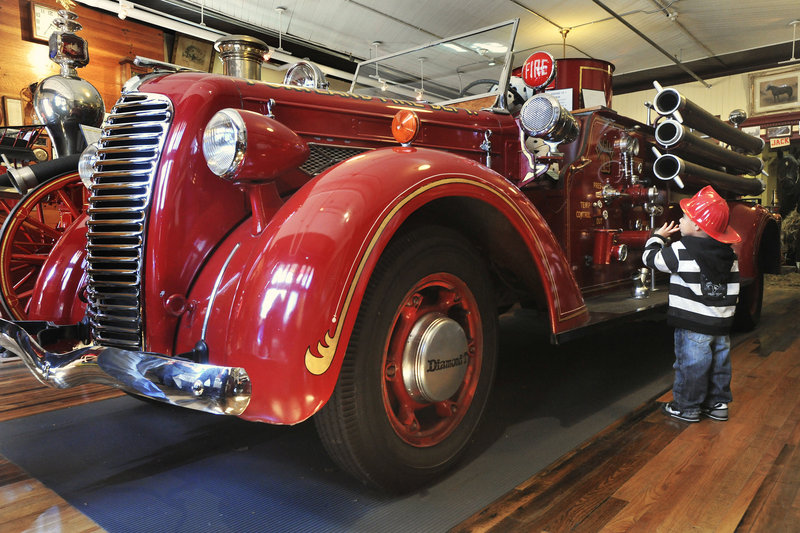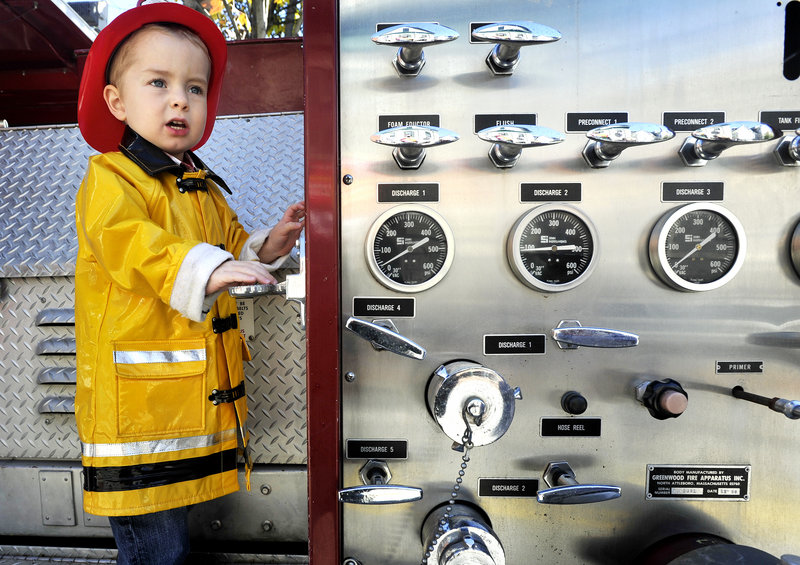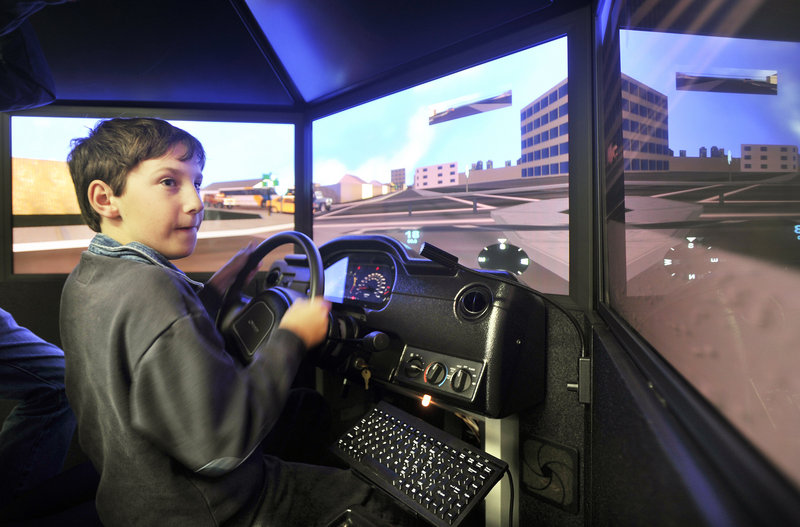PORTLAND – Walking into the Portland Fire Museum’s annual open house Saturday was like taking a step back in time.
Horses like those that were once used to pull water pumps around the city were back in their stalls. The ancient hand-pumpers were there. The brass in the old firehouse gleamed and rows of pictures of old fire companies lined the walls.
So the scene just across the street was a bit jarring. Inside a huge trailer parked on Spring Street, visitors could see if they could guide a large modern fire truck through sharp city turns and avoid traffic to get to the site of a house fire in a few minutes to put out the flames.
The city wasn’t entrusting one of those expensive fire trucks to some teenagers, however. The driving was done on a simulator that several Portland area fire companies got last year so drivers can be trained without endangering the actual equipment or the public.
There are two simulators in the $450,000 trailer, which is in the hands of the Metro Fire Chiefs Coalition via a federal grant and is used by fire companies around the state. One simulator is set up like the cab of a large hook-and-ladder truck, with a seat for the driver and another for an assistant, who handles radio communications in the right-hand seat.
The other is designed to mimic what it’s like to steer a patrol car or ambulance through city streets.
The simulators are designed to be as close to the actual experience as possible. In addition to the view through the windshield, the activity “behind” the vehicles can be seen in rearview mirrors displayed on the screen. Screens to the sides allow drivers to look down side streets before they shoot across a busy intersection.
David Pratt, a Portland Fire Department firefighter and paramedic, controls the simulators. He has hundreds of scenarios programmed into the computer that operates the simulators. The simulator can be set to train an ambulance driver to get to the scene of an accident quickly, for a police officer to pull over a driver who runs a stop sign in front of the cruiser and for a fire engine to get to a house fire before the flames spread.
Still, some of the visitors to the trailer, like 13-year-old Joshua Butts of Ward, S.C., treated it like a video game — his cruiser spun out of control after he raced down a city street at about 100 mph, then crashed into a tractor-trailer. Joshua’s mother, Tanya Butts, couldn’t stand to watch her son careening down virtual roads and left the trailer while he “drove.’
Pratt said the simulator may resemble its video game cousins, but it has a serious practical purpose.
He notes that the simulator can be programmed to mimic the conditions a public safety officer will often see in Portland, such as snow and fog, with stopping times lengthened and visibility limited. It also has rural scenarios for other parts of the state, with the computers programmed to direct a fire truck driver to a forest fire or overturned timber truck.
Pratt said it can also be programmed to recreate the circumstances around an accident involving a public safety vehicle. Going through the conditions and positions of the vehicles again allows drivers to consider other things they might have done to possibly avoid the accident, information they can apply in the future.
Pratt said Portland will get the trailer to train its drivers this winter. It’s been in the hands of other towns and cities up until this point, he said.
And while it’s serious business, Pratt said the simulators have a fun side as well — one of the vehicles programmed into it is a sleek black Camaro which hits a top virtual speed of 250 mph.
“That gives the instructors something to do during a break,” he said.
Staff Writer Edward D. Murphy can be contacted at 791-6465 or at: emurphy@pressherald.com
Send questions/comments to the editors.







Success. Please wait for the page to reload. If the page does not reload within 5 seconds, please refresh the page.
Enter your email and password to access comments.
Hi, to comment on stories you must . This profile is in addition to your subscription and website login.
Already have a commenting profile? .
Invalid username/password.
Please check your email to confirm and complete your registration.
Only subscribers are eligible to post comments. Please subscribe or login first for digital access. Here’s why.
Use the form below to reset your password. When you've submitted your account email, we will send an email with a reset code.